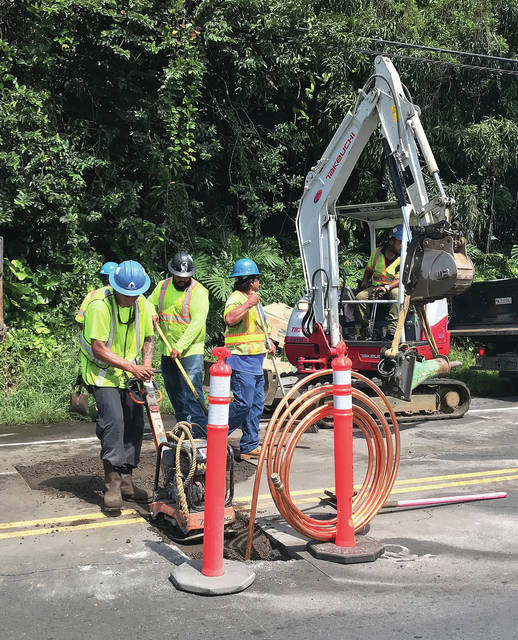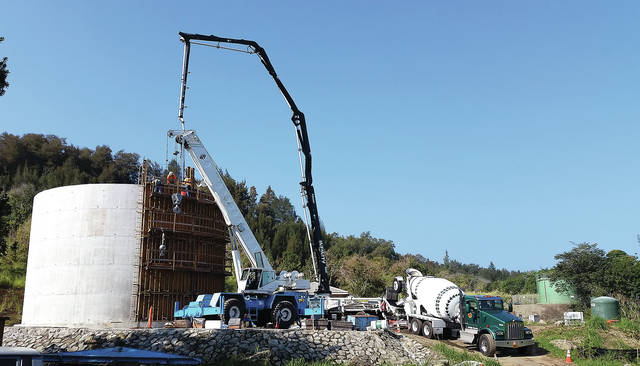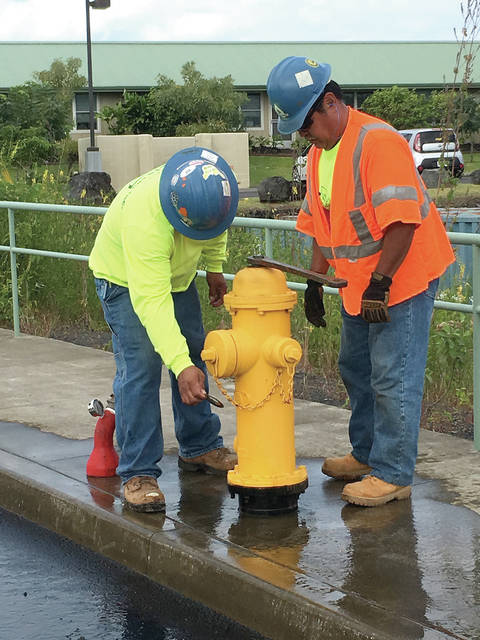HILO — Water rates are expected to go up 5 percent this year in a $55.7 million Department of Water Supply budget that got a preliminary nod Tuesday from the Water Board.
The board unanimously agreed to forward the budget, which would go into effect July 1, to a March 19 public hearing in Kona before setting it for two more votes. The budget is a 3 percent increase over this year.
Most of the increase is attributed to the cost of employees, said Manager/Chief Engineer Keith Okamoto. Not only is there a 3 percent increase for the department’s 191 union employees, there’s an increase in the employee’s retirement fund of anywhere from 19 percent to 22 percent, he said. The department plans to add six new positions.
Okamoto said the wage increase is an estimate.
“It’s not based on inflation or the cost of living; it’s based on collective bargaining,” he said.
The water rate increase is part of a 2015 rate plan, but officials say another rate study will probably be requested later this year for action in later years.
Water Board member David De Luz Jr. said a rate study and a fiscal analysis is essential, “so we don’t eat into our cash reserves.”
“I don’t think your consumption will keep pace,” De Luz said. “Not that I like raising rates, but we’ve got to be prudent.”
The department estimates consumption in the 2019-20 fiscal year to be about 9.7 billion gallons, or 1 percent less than this year.
Still, there’s enough carryover in the budget to use $5.5 million to pay down the principal on long-term debt and $444,900 to pay for the capital improvement program reserve construction budget, budget-writers say.
In all, an independent audit showed the department in pretty good shape, with a $3.7 million net increase in cash as of June 30, 2018, according to auditors N&K CPAs Inc. of Honolulu.
“That’s always a good indication,” said Chad Funasaki, principal in the Assurance Services Division of the firm.
The department also presented a $122.7 million, five-year capital improvement project plan that would use $18.4 million in the coming fiscal year to concentrate on nine specific projects, in addition to islandwide needs. Among the top projects: Puainako and Makalika streets, in Hilo, pipeline replacements at $2 million each, North Kona mid-elevation deep well phase 1 at $1.5 million and North Kona well phase 1 at $1.3 million.
The water bill includes an energy charge, a water consumption charge, a set standby charge and a power cost charge that fluctuates with the price of electricity. The water department, a semi-autonomous agency, doesn’t get tax dollars but is funded by charges for its water service.








